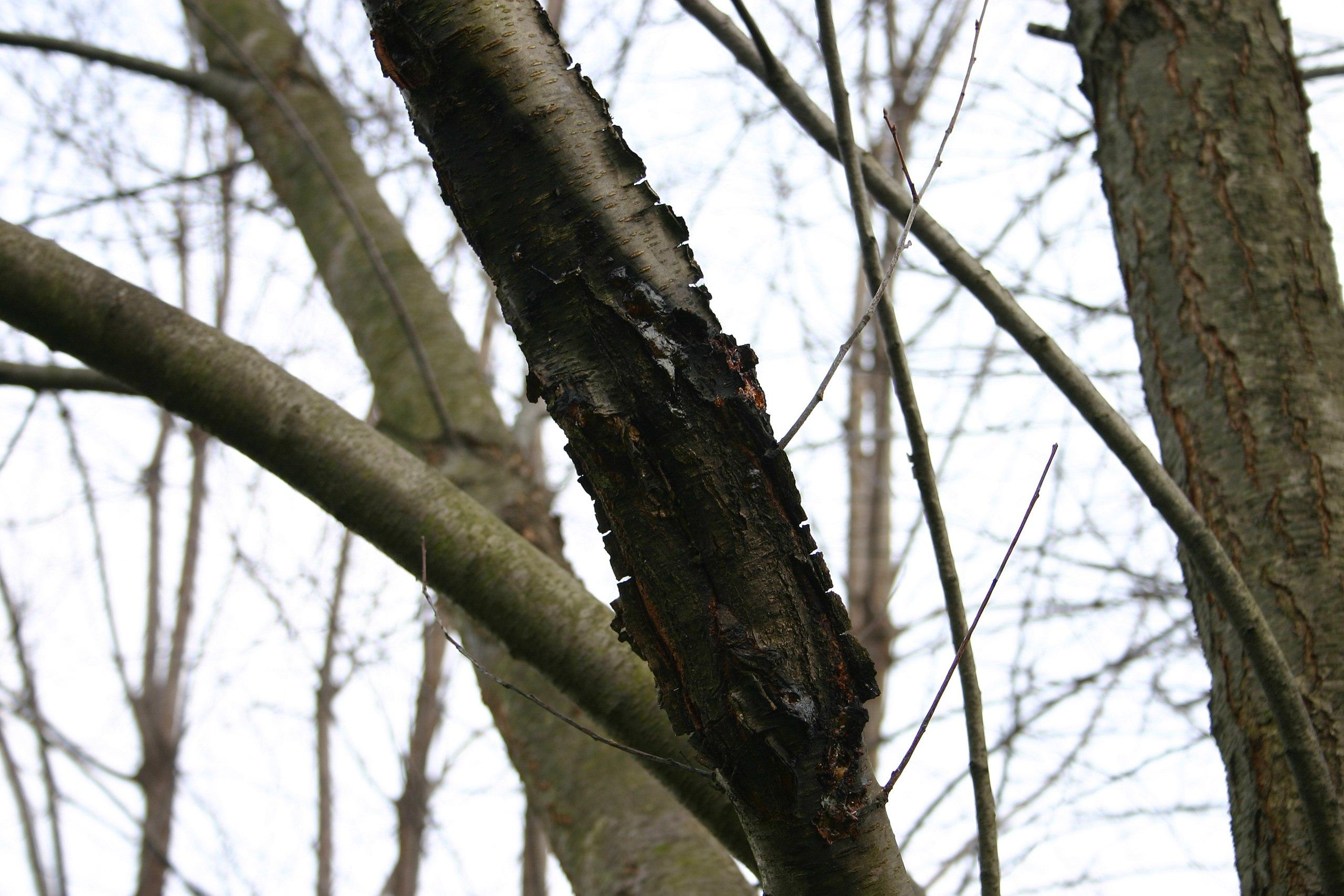
Canker stain (Ceratocystis canker)
Ceratocystis fimbriata
Also Known As - Ceratocystis canker (Canker stain)What is Ceratocystis canker (Ceratocystis fimbriata)?
Sycamore canker stain, caused by Ceratocystis fimbriata f. sp. platani, is a fungal disease affecting Sycamore and London plane trees (Platanus spp.). Infected trees exhibit a sparse canopy, and chlorotic leaves, and develop elongated cankers with a sunken, dark, flattened appearance on limbs and trunks. The dark bluish-black discoloration is observed in the cambium, phloem, and sapwood. The disease can lead to tree death within 1 or 2 years.
How does Ceratocystis canker (Ceratocystis fimbriata) occur?
Canker stain, caused by Ceratocystis fimbriata f. sp. platani, primarily occurs through human-induced injuries or mechanical wounds to trees. The fungus produces sticky spores that remain infective for a month or more, facilitating spread through contaminated tools and equipment, such as pruning saws. Additionally, natural root grafts between infected trees and nearby hosts can contribute to disease transmission.
Symptoms
1 - Plants Health
• Ceratocystis fimbriata has a detrimental impact on plants, particularly trees. Infected trees experience a rapid decline, characterized by wilting, branch dieback, and eventual death within 1-2 years. • The disease also leads to the development of a sparse canopy, with small, chlorotic leaves that impair the tree's vigor and hinder photosynthesis, hampering its ability to produce energy and further compromising its overall health.
2 - Impacts on Soil
• The decomposition of infected trees disrupts nutrient cycling, causing changes in soil nutrient dynamics. • Additionally, the presence of the pathogen can have implications for soil microbial communities, potentially affecting the overall functioning of the soil ecosystem.
3 - Impact on Environment
• The death of trees leads to reduced canopy cover, affecting microclimate and sunlight exposure. • This loss of habitat and food sources has implications for wildlife, insects, and other plants reliant on the affected trees. • Furthermore, the removal and replacement costs, along with the impact on property values, affect both urban and natural areas.
Solutions
1 - Cultural Practices
• Prevent bark injuries from lawnmowers and string trimmers. • Keep soil bare or use mulch near trunks to avoid damage. • Proper irrigation encourages deeper root growth. • Promptly remove infected trees and dispose of wood away from healthy trees. • Trench around stumps to prevent root grafts between infected and healthy trees. • Send samples of freshly infected wood to a diagnostic laboratory.
2 - Avoid Unnecessary Pruning and Tool Sanitization
• Minimize pruning except for hazardous limbs or dead trees. • Prune during dry weather in December and January. • Clean tools with detergent and water after pruning or tree maintenance. • Soak tools in a 10-20% bleach solution. Note: Chemical control methods have shown limited effectiveness against Canker Stain. Sanitation and cultural practices are key for disease management.
